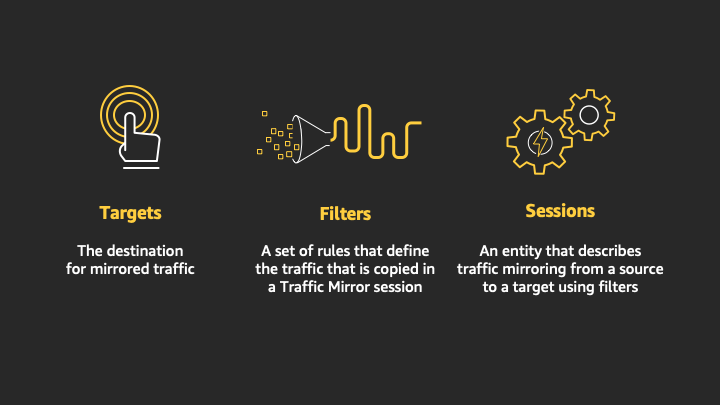Traffic Mirroring Concepts
Traffic Mirroring components:

Targets: is the destination for a traffic mirror session.
- The traffic mirror target can be an elastic network interface, or a Network Load Balancer. After you create a target, assign it to a traffic mirror session. A target can be used in more than one sessions.
- You must configure a security group for the traffic mirror target that allows VXLAN traffic (UDP port 4789) from the source to the target.
- You can share a traffic mirror target across accounts.
Filters: Define the traffic that is mirrored.
- You use a traffic mirror filter and its rules to define the traffic that is mirrored. A traffic mirror filter contains one or more traffic mirror rules, and a set of network services.
- You can define a set of parameters to apply to the traffic mirror source traffic to determine the traffic to mirror. The following traffic mirror filter rule parameters are available:
- Traffic direction: Inbound or outbound
- Action: The action to take, either to accept or reject the packet
- Protocol: The L4 protocol
- Source port range
- Destination port range
- Source CIDR block
- Destination CIDR block
Sessions: Relationship between source and target
- A traffic mirror session establishes a relationship between a traffic mirror source and a traffic mirror target. It contains the following resources:
- A traffic mirror source
- A traffic mirror target
- A traffic mirror filter
- Each Traffic Mirror source can support up to 3 sessions.
- Session number determines the priority
- Lowest ID given the highest priority
- Packet mirrored only once
- A traffic mirror session establishes a relationship between a traffic mirror source and a traffic mirror target. It contains the following resources: